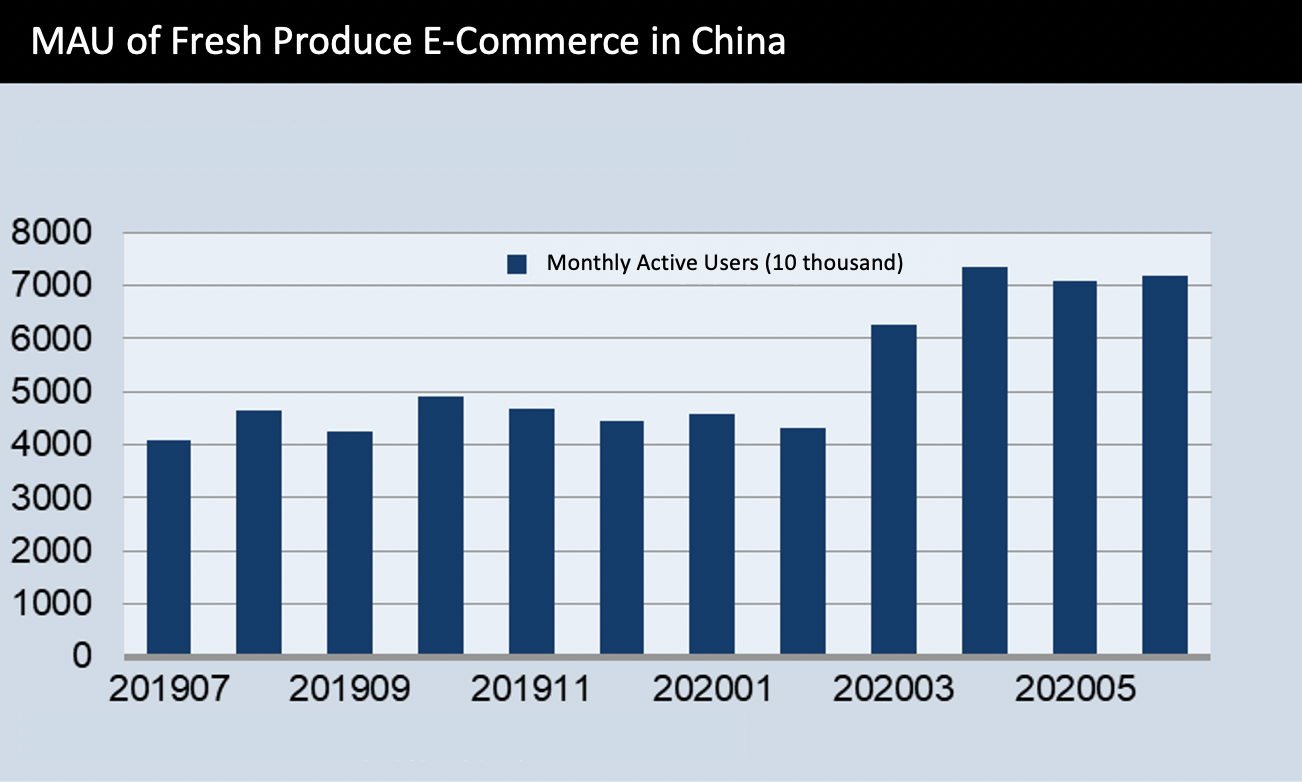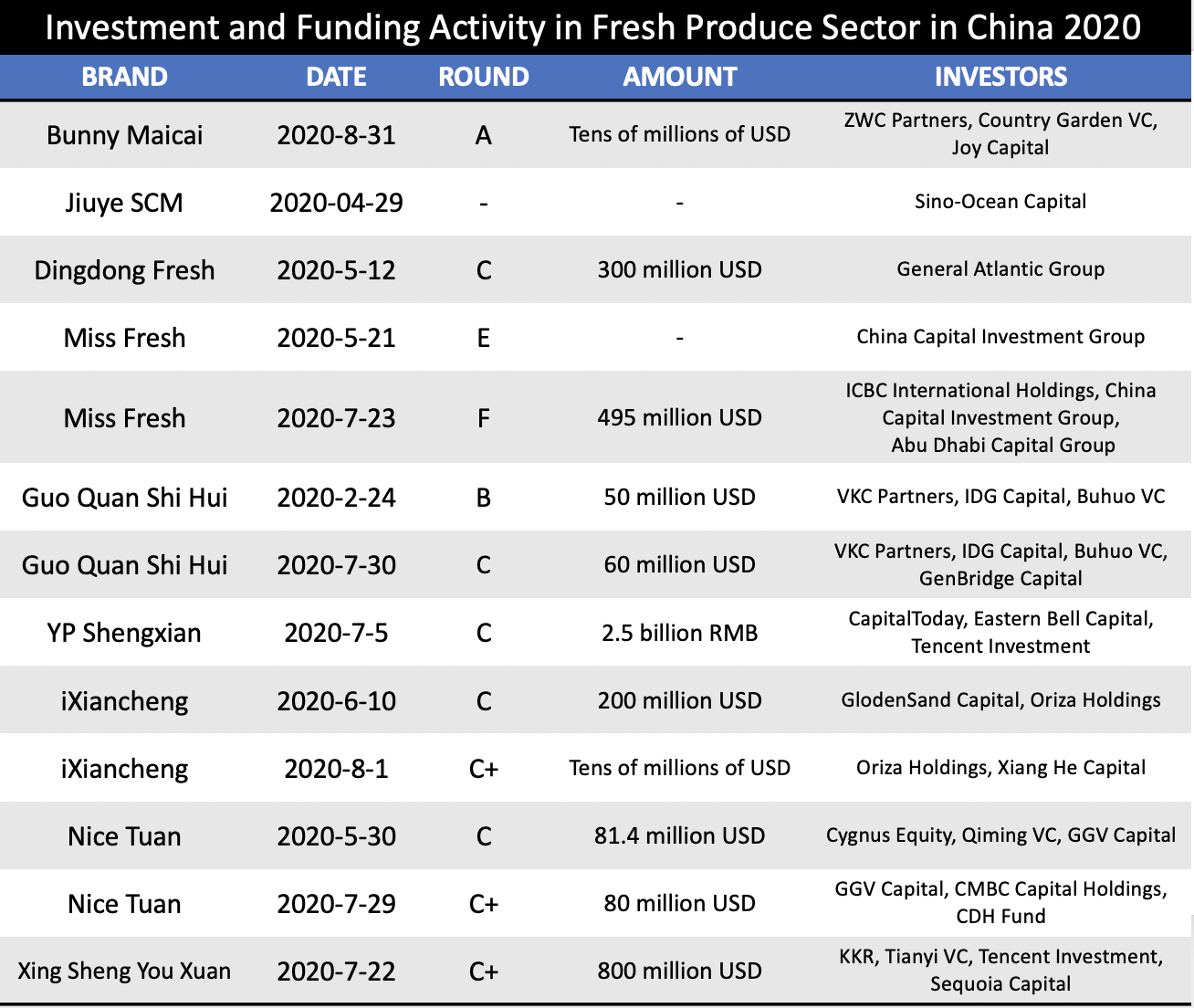This is a preview of Periscope—a weekly report by KrASIA, delving into China’s industries and markets. We discuss a different space each week and include highlights of relevant top stories. If you would like to read the report in full and gain access to our library, please click here.
A trillion-dollar market
According to data from China’s National Bureau of Statistics, output volume of fresh agricultural produce in 2019 was around 1.2 billion tons, representing RMB 7 trillion (USD 1.1 trillion) in value. If we include intermediate industries, such as fresh food processing storage, and distribution, the value of this market swells to an astonishing RMB 20 trillion (USD 3.0 trillion).
Fresh food e-commerce penetration set to explode
The sudden advent of COVID-19 in late 2019 has accelerated the growth of the fresh food e-commerce subindustry. In H1 2020, the transaction volume for this subindustry totalled at RMB 182.12 billion. This represents a year-on-year increase of 137.6% — exceeding the volume recorded in 2019.
Investors have began flocking to the industry too. For example, Didi, China’s premier ride-sharing company, is branching out into e-commerce and grocery delivery.

A changing demographic
Looking at the age distribution amongst fresh food e-commerce consumers, it can be observed that the consumer group as a whole is increasing in scale. In particular, the more mature age groups have seen positive growth. Lower-tier cities are also becoming hotspots of demand.
Restructuring, M&A, and growth
In 2019 and 2020, the fresh food industry witnessed reorganisations, mergers, and exapnsions. In the community group-buying industry, Shihui group and Youmeiyou merged in early 2019, while Tongcheng and Linlinyi merged in July 2020.

Density is key
According to data from the China E-commerce Research center, there were about 4,000 entrants in China’s fresh food e-commerce industry, but only 4% have broken even, with 88% of them losing money and a mere 1% achieving profit.
The core problem is a lack of density. High-frequency, low margin, and community based consumption trends mean that consumer density is crucial to achieving profitability.
Demand drivers will instigate transformative action
China’s production sources are fragmented and low-scale in terms of fresh food production. Supply chains are also under-developed. According to a 2019 report by China’s Cold Chain commission, the overall cold-chain transportation percentage for fresh food is only at 45.4%.
As such, a top-down directive is required to transform China’s supply chains and increase scale of production. Bottom-up efforts, by ensuring that orders reach a critical mass to establish a cold chain and generate economies of scale, are also necessary.
